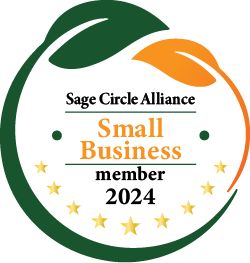Whether you’ve experienced it firsthand or not, you’re likely familiar with the concept of speed dating—an organized social event where participants engage in a series of brief, one-on-one meetings to explore potential romantic connections. Drawing inspiration from this, speed networking emerged as a natural progression.
 The concept of speed dating is attributed to Rabbi Yaacov Deyo, who introduced it to Jewish singles in Los Angeles in the late 1990s. The events were initially organized as a way to help young Jewish singles meet and find potential partners within their community. From there, the idea of speed dating gained popularity and spread to various demographics and communities worldwide. So, while it was introduced primarily to a younger age group, its appeal quickly broadened to include people of various ages and backgrounds.
The concept of speed dating is attributed to Rabbi Yaacov Deyo, who introduced it to Jewish singles in Los Angeles in the late 1990s. The events were initially organized as a way to help young Jewish singles meet and find potential partners within their community. From there, the idea of speed dating gained popularity and spread to various demographics and communities worldwide. So, while it was introduced primarily to a younger age group, its appeal quickly broadened to include people of various ages and backgrounds.
The popularity of speed dating surged in the late 1990s and early 2000s, providing singles with a structured and time-effective method to meet potential partners.
The Start of Speed Networking
Recognizing the success of this format in facilitating quick interactions, the idea of applying a similar model to professional networking events began to take shape.
Although the precise origins of speed networking are not entirely clear, it emerged in response to the increasing demand among professionals to efficiently network in fast-paced environments.
The transition to speed networking was a natural evolution, maintaining the essence of brief one-on-one meetings while shifting the focus to professional relationships. Discussions revolved around topics such as career growth, industry insights, and potential collaborations.
essence of brief one-on-one meetings while shifting the focus to professional relationships. Discussions revolved around topics such as career growth, industry insights, and potential collaborations.
Speed networking quickly gained traction as an invaluable tool for professionals aiming to expand their networks, especially in industries where networking is essential for career advancement and business success. Today, speed networking events are commonplace, organized by businesses, professional associations, and networking groups, facilitating meaningful connections among professionals within a condensed timeframe.
Amazingly, the popularity of speed networking has taken off in the virtual environment. If you participate in, or host virtual events, consider offering speed networking to the agenda.
Benefits of Speed Networking
Speed networking allows participants to connect with each other in a series of short, timed one-on-one conversations. The goal is to facilitate quick and efficient introductions, enabling participants to meet a large number of people within a short period.
Efficient Networking: Participants can meet and interact with a large number of people in a short amount of time. This efficiency is particularly valuable for busy professionals who want to maximize their networking opportunities.
Diverse Connections: The random pairings in speed networking ensure that participants interact with a diverse group of individuals, exposing them to different backgrounds, industries, and perspectives.
Time-Saving: Traditional networking events can be time-consuming, with participants navigating crowded rooms to find relevant connections. Speed networking eliminates the need for wandering and provides a structured approach, saving time for both organizers and participants.
Focused Interactions: The timed nature of each interaction encourages participants to provide concise and focused introductions. This can lead to more meaningful conversations as participants quickly get to the core of their professional interests and goals.
Increased Engagement: The structured format and short timeframes help maintain participants’ attention and engagement throughout the event. This can lead to more productive networking experiences.
Networking Opportunities for Introverts: For individuals who may be more introverted or uncomfortable in large social settings, speed networking provides a controlled and structured environment, making it easier for them to initiate conversations.
Broader Reach: Virtual speed networking allows participants to connect with professionals from different geographical locations, broadening their network beyond local boundaries.
Opportunity for Follow-up: Many virtual speed networking platforms facilitate the exchange of contact information or connections on professional networking sites, providing participants with the means to continue building relationships after the event.
Adaptability: Virtual speed networking is adaptable to various industries and professional settings. It can be customized to meet the specific goals and needs of different events, such as career fairs, conferences, or industry-specific gatherings.
Getting the Most Out of Speed Network
The effectiveness of speed networking can vary depending on various factors such as your preparation, approach, the quality of interactions, and the relevance of connections made. Here’s how you can ensure it’s a valuable experience:
Preparation: Come prepared with a clear understanding of your goals and objectives for the event. Know what you want to achieve and how you can articulate it effectively during your interactions.
with a clear understanding of your goals and objectives for the event. Know what you want to achieve and how you can articulate it effectively during your interactions.
Research: If possible, research the attendees or the companies participating in the event beforehand. This can help you identify potential connections that align with your business goals or interests.
Engagement: Actively engage in conversations during the networking sessions. Listen attentively, ask relevant questions, and share your expertise or insights where appropriate. Be genuinely interested in learning about others and their businesses.
Follow-Up: After the event, follow up with the connections you’ve made in a timely manner. Send personalized messages expressing appreciation for the conversation and reiterating your interest in further discussion or collaboration.
Evaluate and Adjust: Take some time to reflect on your experience after the event. Assess the quality of connections made and the outcomes achieved. Identify areas for improvement and adjust your approach for future networking opportunities.
Networking Mindset: Approach speed networking with a mindset focused on building genuine relationships and adding value to others. Avoid solely focusing on self-promotion or immediate gains, as this can hinder long-term networking success.
Avoid solely focusing on self-promotion or immediate gains, as this can hinder long-term networking success.
By approaching speed networking with the right mindset, preparation, and follow-up, you can maximize its potential as a valuable tool for growing your business and expanding your professional network.
Overall, the structured and time-efficient nature of virtual speed networking enhances the networking experience by promoting meaningful connections and expanding participants’ professional networks.
Because we know the value of networking in business, we often focus on the topic of networking on our VIVE Livestreams. Check it out at https://www.youtube.com/@VeganpreneurRevolution/


